Arborvitaes are a popular choice when it comes to landscaping and creating natural privacy screens.
Arborvitae trees grow into elegant pyramidal or conical shapes adorned with lush green foliage. They maintain their vibrant green appearance all year long, and when you gently squeeze their needles, it releases a delightful fragrance.
Considering all these things, many people love to grow them in their homes.
If you’re also thinking about adding these evergreen trees to your garden, you might wonder: “How fast do arborvitae grow?”
Today, we’re here to provide you with everything you need to know about the arborvitae plant, from their growth rate to some handy tips for speeding up their growth.
So, without any further delay, let’s get started!
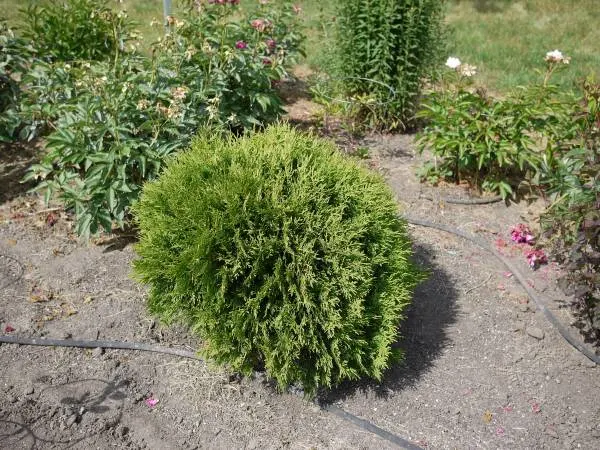
How Fast Do Arborvitae Grow? | Growth Rates!
Arborvitaes are generally considered slow growers.
Arborvitae tree has a moderate to slow pace compared to other types of trees and shrubs, which gives a timeless charm to any landscape.
While most arborvitae trees grow gradually, some can be more ambitious, reaching heights of 3–5 feet each year.
However, the exact growth rate can differ based on the particular type of arborvitae tree, the environment, and how well the tree is cared for.
Let’s discuss in detail how fast different types of arborvitae grow in their specific environments.
Eastern Arborvitae Tree
The Eastern arborvitae tree, also known as the American arborvitae tree, is a tree that can reach up to an impressive 60 feet in height and 15 feet in width.
Regarding its growth rate, the American arborvitae tree is known for taking its time to grow, adding just about 12 to 24 inches each year, and sometimes even less. It’s often used as a natural screen or hedge to provide privacy and beauty to your outdoor space.
And here’s the kicker – it’s tough as nails.
The American arborvitae trees are like the superheroes of the plant world, rarely getting sick or bothered by pests, making them one of the most low-maintenance plant species among other arborvitae plants.
So, if you’re looking for an arborvitae tree that’s both a stunner and a survivor, the Eastern arborvitae might just be your green hero.
Growing Conditions
To make it happy, plant your American arborvitae tree in well-drained soil.
Eastern arborvitae tree loves the full sun too, so don’t hide it in the shade. Give it plenty of direct sunlight, and it will thank you with robust growth.
If we talk about its USDA hardiness zone, remember it prefers to stay in zones 3 through 7.
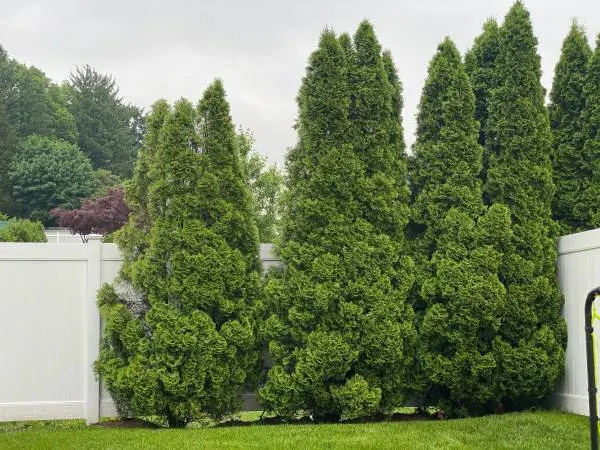
Korean Arborvitae Tree
The Korean arborvitae tree is quite a mysterious plant regarding its growth rate.
We don’t have exact numbers, but as far as its growth rates are concerned: it’s a slowpoke among arborvitae trees.
This tree can be a bit of a shape-shifter too – it can either be a stout shrub, reaching about 15 feet tall and spreading 10 feet wide, or it can go for the ‘tall and slender’ look, soaring up to 30 feet with a spread of 15 feet if it grows into a full-fledged tree.
Getting one of these Korean arborvitae trees for your garden can feel like finding hidden treasure. This plant is quite rare, especially in China and South Korea, where it is protected by rules to keep it safe.
So, if you want to grow Korean arborvitae tree in your garden, you might need to search a bit harder to find one.
Growing Conditions:
Now, if you’re thinking about planting one of these evergreen trees, here’s the scoop on their ideal hangout.
Forget about acidic soil; these arborvitae grow best in neutral and alkaline stuff.
They’re sun-lovers, so make sure they soak up plenty of full sun and direct sunlight. But don’t forget to keep their thirst quenched – they’re big fans of water and well-drained soil.
If you’re in USDA hardiness zones 5 to 8, you might just have the perfect home for a unique Korean arborvitae tree.
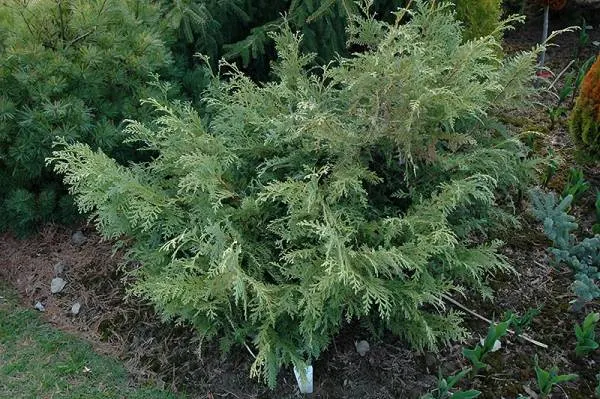
Sichuan Arborvitae
The Sichuan arborvitae is a remarkable tree that can grow really tall, reaching heights between 30 to 60 feet.
It’s like a tall, skinny, green giant, with a width of only about 12 inches.
This arborvitae tree is a slow and steady grower, adding just a bit more than 12 inches to its height each year.
Its leaves and cones are smaller than its tree relatives, which makes it easy to spot.
Growing conditions:
If you’re thinking of planting this green giant in your garden, remember that it’s quite picky about where it lives, preferring a special spot on the southern slopes of the Daba Shan mountains.
The Sichuan arborvitae enjoys sunlight but also requires shade to stay cool during the hot summer.
Additionally, it thrives in the hardiness zone from 5–8 and prefers well-draining soil.
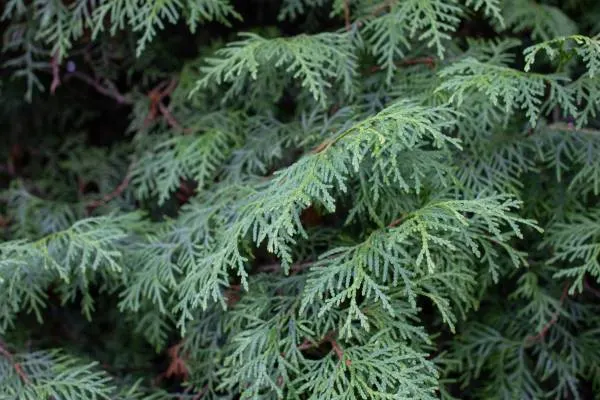
Emerald Green Arborvitae
The striking Emerald green arborvitae grow, reaching heights of up to 15 feet, and boasts a lush crown that stretches 3 feet wide.
It is a green giant, makig it a natural solution to your privacy in your outdoor space.
The pyramidal shape and vibrant green leaves of Emerald green arborvitae trees make them real head-turners which bring beauty to any garden. Whether you are crafting shelterbelts, privacy hedges, or screens, these trees have got you all covered.
One of the best things about this tree is how low-maintenance it is. You won’t have to worry about constant trimming and pruning.
The Emerald green arborvitae tree is among the slow-growing arborvitae species, and grows between 6–9 inches per year.
Growing Conditions
The Emerald green arborvitae trees thrive in hardiness zones 3 to 7. Plant Emerald green arborvitae where it can bash under the sun in partial shade.
Plus, it’s not too picky about soil types, making it a versatile addition to any landscape.
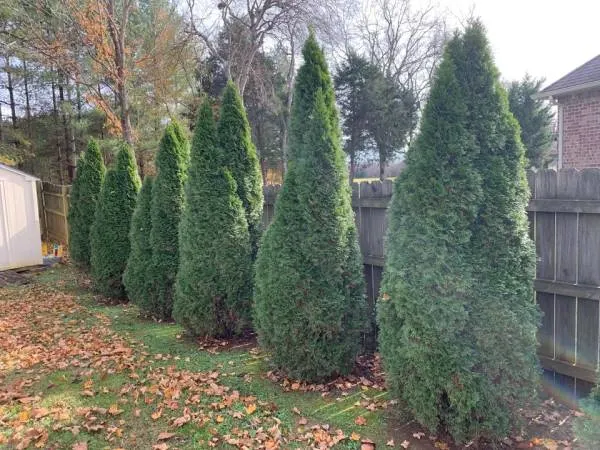
Green Giant Arborvitae
When it comes to fast and fuss-free greenery, look no further than the Green giant arborvitae.
With leaves as soft as a whisper underfoot and an ever-bright green wardrobe, these trees are a visual delight.
This green giant is serious about growing. The Giant arborvitae shoots up to 60 feet tall at a brisk pace, adding 3 feet to its height every year.
They’re like the guardians of privacy, with a spread of 12 to 20 feet, offering a lush, year-round, lush green leaves and shield.
Say goodbye to nosy neighbors and hello to elegance, tranquility, and lushness in your backyard or landscape.
Growing Conditions
The Giant arborvitae trees don’t demand much; they’ll thrive in various soil types as long as it’s well-drained and not too soggy.
They prefer a sun-soaked spot in USDA hardiness zones 5 to 7 but can handle partial shade.
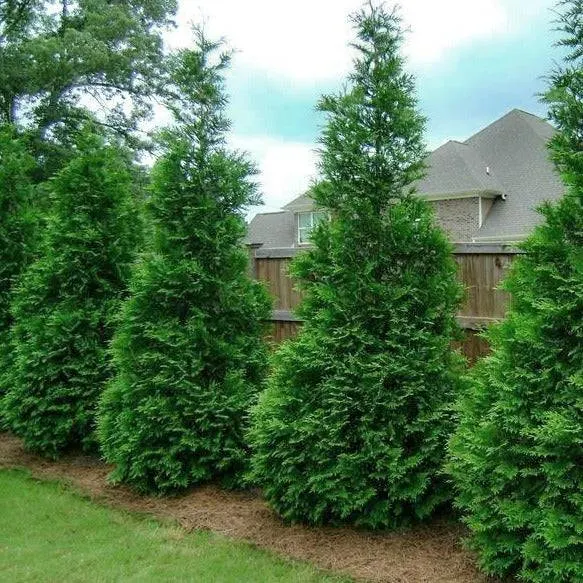
How to Make Your Arborvitae Grow More Quickly?
Looking after your arborvitae tree doesn’t seem like a complicated task.
Many people plant these trees and then forget about them, especially in places where it rains a lot.
But a little attention can go a long way if you want your tree to shine and be super healthy. It’s incredible to have a plant that can pretty much fend itself off.
But some tender loving care (TLC) from time to time can boost your plant health and growth rate.
Here are a few things you must consider if you really want to grow your arborvitae more quickly.
Choose the Right Time of the Year
Arborvitae trees grow throughout the year.
However, choosing to plant arborvitae at the right time can significantly impact how well they grow.
If you plant arborvitae during the scorching summer months, the soil might get too dry, which can slow down their growth. While some arborvitaes can handle dry conditions, they still struggle to grow in hot and dry soil.
So, to make sure their fast and healthy growth, it’s better to wait until the intense summer heat has passed.
Early spring or late fall stands out as the perfect season to plant arborvitae, allowing them to take root without battling the scorching summer heat.
Alternatively, you can plant them in pots and place them in areas with partial shade. This way, they get the necessary sunlight without being exposed to scorching heat.
Picking the right season for planting these lovely green trees can save you from disappointment and help them flourish.
Proper Planting
Arborvitae trees can be a fantastic addition to your garden, and knowing how to plant and care for them can truly make a world of difference.
These trees typically grow at their best in USDA hardiness zones 3 to 7 and prefer well-draining and slightly acidic soil. They’re happiest when basking in full sunlight, but they can also handle a bit of shade as long as they soak up roughly four hours of direct sunlight daily.
So, find a spot where they get full sunlight before planting.
When it’s time to put your arborvitae in the ground, dig a hole twice as wide as the root ball, but don’t go deeper than its height.
Make sure you space your arborvitae trees properly. To create a natural privacy screen, leave about 3–4 feet of space between each tree.
Growgardener Note: Remember, it’s crucial to understand the specific spacing needs of your particular arborvitae variety. This knowledge will prevent competition for nutrients and ensure your arborvitae tree flourish at its peak!
Soil Type
Arborvitae trees are pretty laid-back when it comes to soil, except for one thing: pH levels.
They can handle a range of pH levels, but they do have a favorite range. They’re happiest when the soil’s pH level is between 6 and 8.
Think of it as their comfort zone.
If the pH goes too high or too low, it might cause some trouble, but this doesn’t happen often.
These trees are like soil chameleons – they can live in different soil types.
But if you want to make them really content, aim for soil that is slightly alkaline, not too dry, not too soggy, but just right.
Water and Fertilization
After planting your first arborvitae plant at the perfect spot, the next step is to take proper care of your tree, which is vital for its well-being.
When young, water them twice a week for a few months to establish strong roots, then shift to once a week. While arborvitae appear lush, they need adequate watering, especially in their first season. Hand watering or using a soaker hose is effective.
If we talk about fertilization, here is the good news for you: The arborvitae trees typically don’t require frequent fertilization. They’re self-sufficient, but a balanced fertilizer with equal parts of nitrogen, phosphorus, and potassium (10-10-10) can be used if growth appears lazy.
To help arborvitae during dry periods, apply a 4-inch mulch layer around the base. It acts as a moisture barrier, aiding water retention and nutrient preservation.
Related Article: 5 Best Evergreen Fertilizer – Detailed Reviews!
Pruning
Are you looking to give your arborvitae trees a boost in health and appearance?
It’s easier than you might think!
In the spring, a little trim can go a long way. Just snip off those extra leaves on the branches and watch your trees grow denser and thicker.
It’s like giving them a healthy makeover.
Pro Tip: Keep an eye out for sick or dead branches – getting rid of those helps your plant grow well.
Can I Expect My Arborvitae Tree to Continue Growing at the Same Rate Throughout its Lifespan?
No, arborvitae trees don’t keep growing at the same speed their whole life.
When they’re young, they tend to grow faster, especially during the first few years.
But as they get older, their growth rate slows down.
Think of it like people.
When we’re kids, we grow quickly, but as we become adults, we stop getting taller at the same pace. Arborvitae trees are kind of like that.
Factors like the tree’s species, the place in which it’s planted, and how well it’s taken care of can also affect how fast it grows.
Some types of arborvitae may grow faster than others.
If the tree has a good spot with the right soil, water, and sunlight, it’s more likely to keep growing steadily.
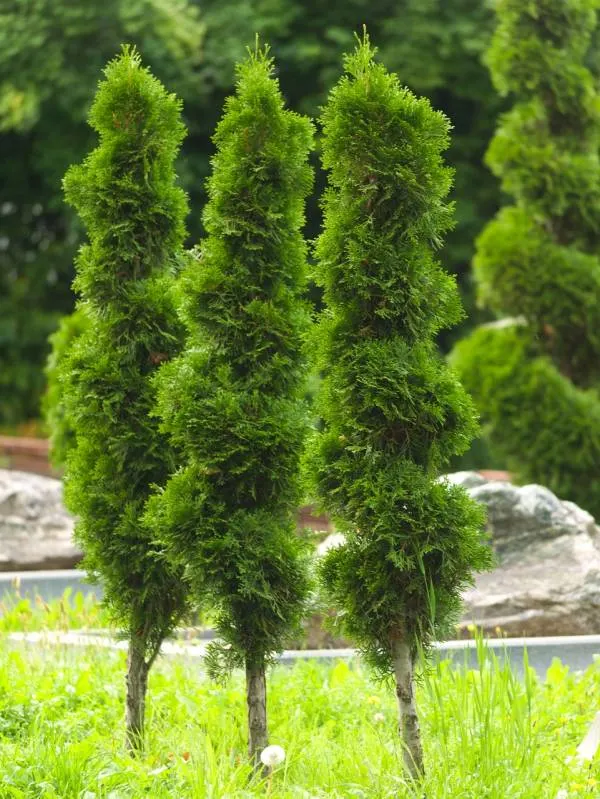
At What Age or Size Do Arborvitae Trees Usually Reach Maturity?
Arborvitae trees usually reach maturity when they are 10 to 20 years old.
But it’s not just about age; it’s also about size.
Although their size varies from species to species, generally, when an arborvitae tree is around 10 to 15 feet tall, it’s considered mature.
Think of it like kids growing up.
When they’re around 10 to 20 years old, they’re becoming more like adults. Arborvitae trees are a bit similar.
After this point, they won’t get much taller, but they’ll keep getting wider and denser.
So, if you want your arborvitae to grow into a big, full tree, you’ll need to give it some time, usually around a decade or so.
That’s all for today!
Let’s move toward the conclusion and summarize the talk here.
Conclusion!
Arborvitaes are generally considered slow-growers, as most of them generally grow about 12–24 inches in height per annum.
Different varieties of arborvitae trees, including Eastern, Korean, Sichuan, Emerald green, and Giant arborvitae trees have different growth rates. Some of these varieties are slow growers, while some varieties are quite ambitious and grow significantly faster.
How quickly they grow depends on the arborvitae variety, where they’re planted, the soil, and how well you care for them.
There are some things to think about before and after planting the arborvitae to make them grow better.
For instance,
Planting at the right time of the year – if you plant your arborvitae during the fall, your arborvitae behave better than those planted in the summer months.
There are also many other factors to consider, like choosing the right spot, checking the soil, etc.
So, don’t miss the opportunity to enhance your outdoor space with fast-growing arborvitae trees – get planting now!
Warmly,
Moiz Atiq.
